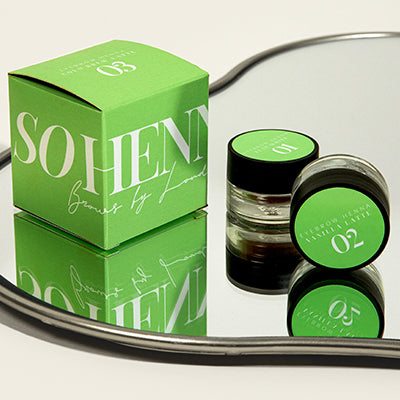FREE STANDARD SHIPPING FOR ORDERS OVER 99€!
FREE STANDARD SHIPPING FOR ORDERS OVER 99€!
NEW IN
Glues & Liquids
Eyelash Extensions
ACCESSORIES
So Henna

Guide to Applying Lash Extensions on Weak Lashes
декември 17, 2024 2 min read
Is it Safe to Lash Weak Natural Lashes? Yes… Sometimes
Do you feel nervous when working with clients who have brittle, sparse, or damaged lashes? That’s a good sign—it shows your commitment to safe lashing! Successfully lashing weak lashes requires skill, patience, and a strong understanding of lash health. Knowing when to say “no” is just as essential. Here are our top tips to help you handle these challenging cases with confidence, leaving clients happy without compromising their natural lashes.
Assessing the Condition of Damaged Lashes
Start with a careful assessment of your client’s lashes. For brittle, sparse, or damaged lashes, exercise extra caution. In some cases, you may even suggest that clients postpone their appointment to allow natural lashes to strengthen, showing them that you prioritise their lash health above all.
Choosing the Right Extensions
When working with weakened lashes, choosing the right extensions is crucial. Opt for finer lashes—0.07 for up to 3D fans, 0.05 for up to 5D, or classic lashes no thicker than 0.12. Flat lashes are also an excellent choice, as they weigh around half as much as a regular classic lash of the same thickness, making them perfect for a soft, almost wet look without extra weight. Also, consider using shorter lengths to avoid adding weight; this will create a denser, fuller look that’s kinder to fragile lashes.
Application Techniques
Adjusting your technique is essential with fragile lashes. Avoid applying extensions to baby lashes whenever possible; however, for clients with sparse gaps, carefully placed light fans or classics can fill these areas safely. If you must lash baby lashes, schedule a two-week follow-up to monitor their health and growth. Always take extra care with adhesive and ensure no stickies remain, as these can cause even more damage if left unchecked..
Aftercare and Maintenance
After application, suggest follow-up appointments every 2-3 weeks. These fills allow you to monitor lash health, replace extensions, and prevent unnecessary strain on natural lashes. Educating clients on aftercare is equally important. Encourage them to avoid harsh rubbing, refrain from picking at the extensions, and use a lash shampoo daily—these habits help maintain both lash extension longevity, and natural lash health.
Lashing weak or damaged natural lashes requires skill and often restraint, as sometimes the best advice is to wait until lashes are stronger. Remember, safety comes first; by prioritising lash health, you’re setting your clients up to enjoy extensions long-term.
Subscribe
Sign up to get the latest on sales, new releases and more …











